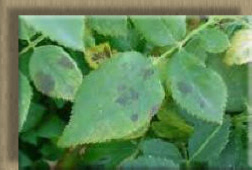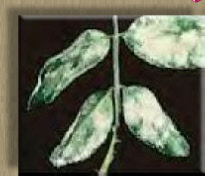


We would be glad to help in diagnosing plant problems.
It is helpful to bring in a sample of the sick plant so we can make a more accurate diagnosis. If the plant problem is caused by insects please put your sample in a plastic bag or catch the insect in a lidded jar. Many insect or disease problems are common, but some are not and descriptions over the phone are hard to diagnose. Plant problems may be cultural, weather related, caused by physical injury or stress, or have several possible explanations. If possible bring a sample of different stages of the problem.
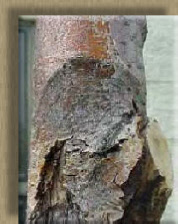
Plant samples can also be sent to the Plant Clinic at the University of Illinois. For details go to http://plantclinic.cropsci.uiuc.edu/
Further information can also be obtained from the
U of I Cooperative Extension website at http://web.extension.uiuc.edu/state/hort.html
Please be willing to leave your sample and wait for a call back during the busiest seasons for answers to your problem.
Here are common insects and diseases
European Pine Sawfly
Pine sawfly is the larva of a wasp-
Control : Spray with Spinosad or Insecticidal Soap. Sprays such as B.t. (Bacillus thuringiensis) are not effective since these are not caterpillars.
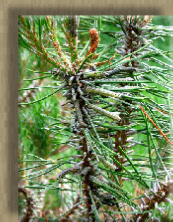
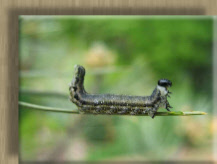
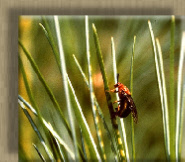
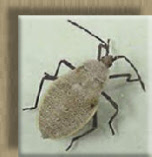

Aphids
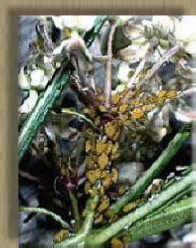
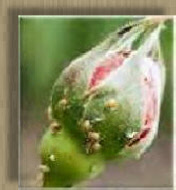
Aphids are light or dark green, sometimes black, or red tiny bugs, with or without wings. Size ranges from about 1/6" long to barely visible. They cluster on stems and under leaves. They feed on many common garden plants and crops. Infested leaves curl and turn yellow and weaken the plant.
Control : Aphids are among the garden pests most effectively controlled by biological methods. Use insecticidal soap, pyrethrin, or neem oil. Do not use Sevin; it may actually cause an increase in aphid population.
Eastern Tent Caterpillar
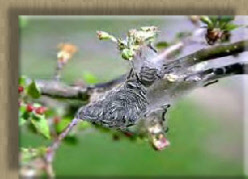
Found mostly on fruit type trees such as cherry, crabapple, apple, and pear, both edible and ornamental types. Small caterpillars hatch from eggs laid in an egg mass wrapped around twigs of the tree. They crawl to a branch crotch and spin a silk tent in the branch crotch, one tent for each egg mass. The caterpillars feed on the leaves of the tree and return to the tent after dark or when cloudy. Caterpillars are hairy, black with a white or yellowish stripe down their back and have blue spots between the two yellow stripes.
Control : Wait until the caterpillars return to the tent and physically remove the
tent with the caterpillars inside. Use paper towels, newspaper, or rags to wipe
the web out of the tree crotch or branch. Sprays must be directed at the caterpillars
while they are out of the web and feeding, if possible. Use B.t. (Bacillus thuriengiensis)
a natural safe insecticide, or ferti" lome Bagworm, Leafminer, and Tent Caterpillar
spray. Sprays are often hard to be effective on caterpillars within the tent so
use them when the caterpillars are feeding on the leaves. Eastern Tent Caterpillars
last for 6-

Fall Webworm
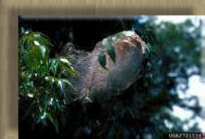
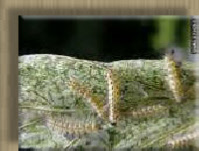
This pest encloses leaves and small branches in light grey silken webs. These webs and the worms that create them can defoliate shade trees and ornamentals and make them aesthetically unattractive. The fall webworm is known to feed on more than 100 host species of forest and shade trees including pecan, fruit trees, maples, persimmon, sweetgum, willow, and cottonwood.
The larvae can be up to 1 inch long and are usually pale yellowish-
Control : By physically removing the web from branches and leaves by pruning or wiping off with a rag or newspaper. Fall webworms feed within the web, so sprays such as Thuricide or Spinosad must penetrate the web in order to control the caterpillars. Any damage caused by fall webworms will not result in death of the tree, although small branches may be killed.
Japanese Beetles
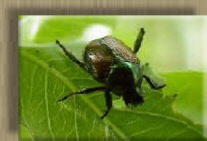
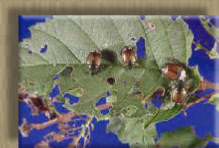
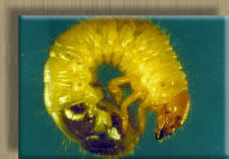
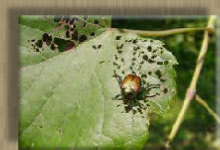
Adult beetles are metallic green with copper wings. There are six tufts of white hair on each side of the body near the outer margins of the wing covers.
These adults emerge from the soil during early May. Their population peaks in early June four to five weeks later. Feeding is the greatest on warm sunny days often in groups on the upper leaves of a variety of over 300 plant species. Feeding holes are of moderate size and irregular and ragged, giving the leaf a lacy appearance
The larvae are white or grayish white grubs with a reddish-
Control : Japanese beetles can be effectively controlled by knocking them from the leaves into a jar or bucket of soapy water. It is especially important to control the early beetles to help reduce the numbers that will be attracted to them as they feed. Japanese beetle traps with lures are available but should be placed away from desirable plants, such as at the edge of your property, to avoid attracting them to your plantings. Sprays are effective in controlling the adult beetles such as Triple Action (neem oil and pyrethrin), Veggie Pharm, and liquid Sevin. Use Milky Spore spread on the lawn to naturally control the grub stage for 20 years or more.

Bagworms
Bagworm larvae (caterpillars) are dark brown and are totally enclosed in bags made of silk, small twigs and leaves that reach up to 2 inches in length. In early June bagworms hatch from overwintered eggs laid in the female's bag the previous summer. As soon as these caterpillars emerge from this bag they begin to build a new bag for themselves. At this time the worms feed on tree and shrub foliage. Bagworms can be found on arborvitae, junipers, red cedars, spruce and other trees and shrubs. Severe damage or even death of an evergreen can occur if left untreated.
Control : If only a few trees or shrubs are infested, simply removing and destroying the bagworms will control them. Sprays of Thuricide (B.t.) or Spinosad will control large infestations. Apply early when bagworms are small for best control.
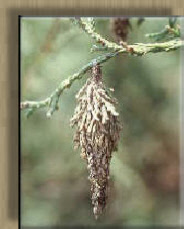
Powdery Mildew
This fungus first appears on new growth when a period of warm dry days are followed by cool damp nights. The new growth is curled and twisted, and the new shoots look badly deformed. It is typical for the mature leaves to look normal on their upper surface but have extensive fungal growth on the leaf underside.
Control : Avoid planting roses in shaded areas, particularly spots that tend to
dry out slowly in the morning. When the weather conditions favor fungal infection,
spray every 7-
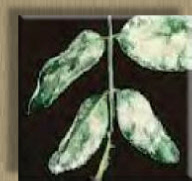
Slime Mold
It's weird. It's gross. It looks like Fido got sick on your freshly spread hardwood bark mulch. Or is it something from outer space? The truth is, it's what botanists call a slime mold, and it's harmless to you, your pets and your plants. If you don't care to look at it, simply scoop it up and put it in the compost pile. Or you can watch it change colors as it goes through this stage of its life cycle
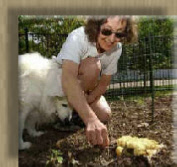

Twig Girdler
A species of long horn beetle that attacks most hardwoods including dogwood, basswood,
redbud, poplar, oak, persimmon, pecan and many fruit trees. A typical infected tree
will exhibitsmall cleanly cut branches on the ground and sometimes dangling branch
tips within the tree. The adult female twig girdler chews a V-
Control : For both Twig Pruner and Girdler, gather fallen branches and prune suspected infested branches still in the tree and burn them.
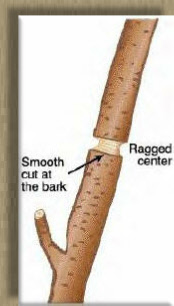
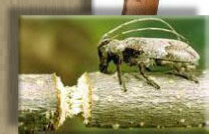
Twig Pruner
Also a species of long horn beetle that attacks many of the same tree species, and its damage looks very similar to the twig girdler. On a closer look, the fallen twigs have a ragged edge along the bark of the twig. This is because this beetle larvae bores deep within the twig and spends this stage of its life cycle chewing its way out of the twig. Eating in concentric circles, the larvae reaches the bark, the branch is weakened and falls off.
Control : For both Twig Pruner and Girdler, gather fallen branches and prune suspected infested branches still in the tree and burn them.
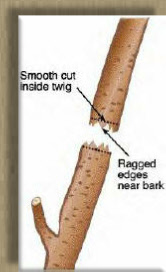
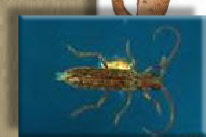

Slugs
Slugs look like a snail without a shell, are up to 2 inches long and are grayish
to brown in color. They feed on seedlings and ornamentals early in the growing season
and like the tender leaf growth of peas, lettuce and other greens and ornamentals
including hostas.
Control : Set bait traps such as dishes of stale beer dug in at ground level so the slugs crawl in and drown. Or use diatomaceous earth, a white powder which is not harmful to humans, animals, or earthworms, but which cuts the slugs so they dehydrate. Slug and snail pellets may be used with caution, but they are fatal to pets and small children and should not be used where they may be eaten by them. Sluggo (iron phosphate) is also a slug repellent and may be used around pets.
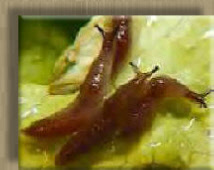
Azalea Lacebugs
Typically the adult lacebug is about 1/8 inch long. Its wings are lacy and clear
with brown and black markings. The nymphs are clear at first growing darker until
they turn black and form spines along the edges of their bodies. The evergreen varieties
of azaleas are the most susceptible, but deciduous varieties and rhododendrons can
also be infected. Nymphs and adult stages will be found on the underside of leaves. They
suck the juices from the leaves, resulting in spotting on the upper surface. Leaves
eventually turn a sickly tan or gray color. Brown-
Control : Spray insecticidal soap or horticultural oil on the undersides of the leaves to control the adults. Apply every two weeks from spring through fall. The damaged leaves will not recover but will be covered by new leaves in the spring. This is the critical time to control the new lacebugs so the new leaves are protected from damage.
Black Spot
Caused by the fungus Diplocarpon rosae, this disease can cause complete defoliation by early fall leaving the plant weakened and susceptible to other problems such as winter injury, stem canker, and total cane dieback.
It appears on the upper sides of leaves as circular black spots with fringed edges,
1/16 to 1/2 inches in diameter, frequently surrounded by a yellowish halo. The leaves
eventually turn completely yellow and fall off. It is spread by splashing water or
wind-
Control : Remove infected and fallen leaves as soon as possible. Prune back infected
plants in spring and burn the prunings. Many varieties are resistant to black spot
disease, so look for resistant roses when choosing plants. Wilt-
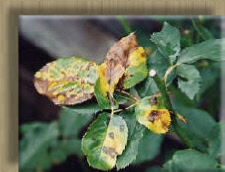
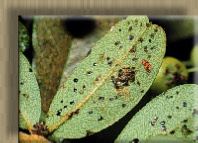
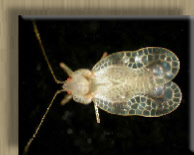
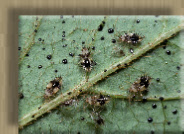
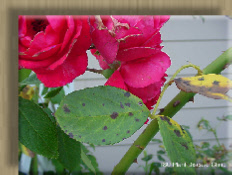
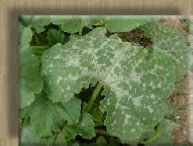
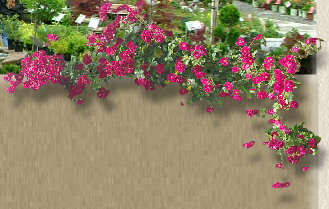
Plant Doctor
